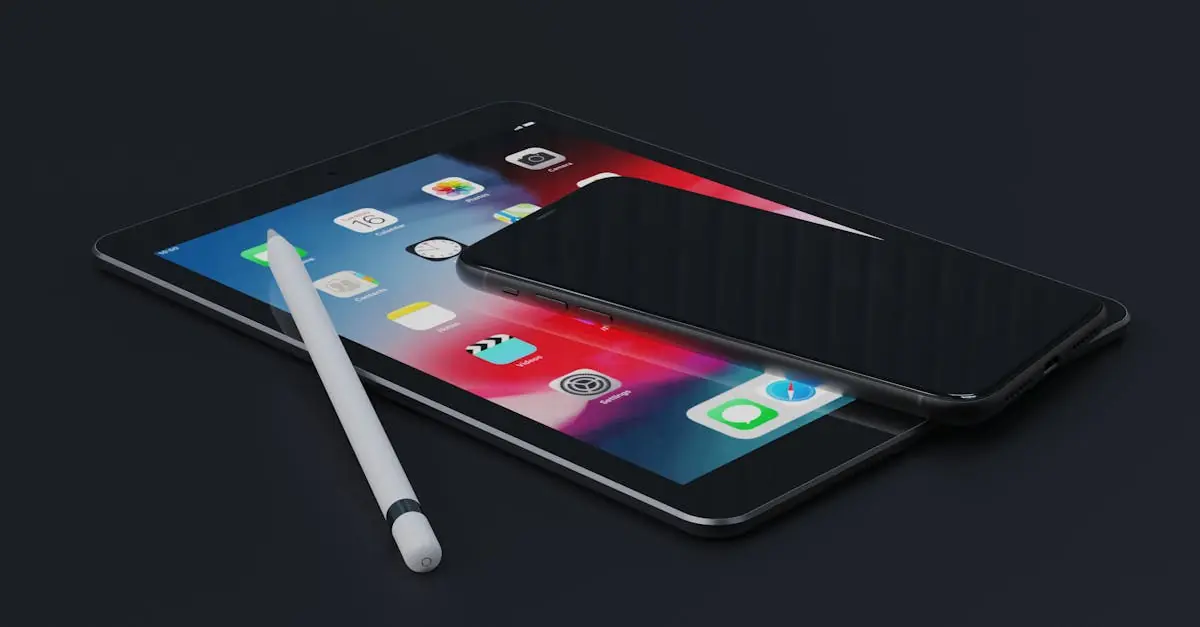Table of Contents
ToggleIn a world where staying connected is as essential as breathing, the iPhone XR steps onto the scene with a question that’s buzzing louder than your group chat notifications: Is it eSIM compatible? Imagine cruising through life without fumbling with SIM cards, all while enjoying the sleek design and powerful features of Apple’s beloved device. Sounds dreamy, right?
Well, hold onto your chargers because the iPhone XR does indeed support eSIM technology! It’s like having your cake and eating it too—no more awkward moments at the airport trying to swap out SIM cards. Instead, users can easily switch carriers or add a second line without breaking a sweat. So, let’s dive into the details and explore how this feature can transform your mobile experience.
Overview of eSIM Technology
eSIM technology simplifies mobile connectivity by replacing traditional SIM cards with embedded chips. These chips allow users to activate mobile plans without physical cards.
What is eSIM?
eSIM stands for embedded SIM, representing a digital alternative to physical SIM cards. This technology is built directly into devices, like the iPhone XR. Users can switch carriers or activate plans instantly via a mobile app or carrier’s website. eSIM eliminates the need for manual insertion and removal, facilitating a seamless mobile experience.
Benefits of eSIM Over Traditional SIM
eSIMs offer numerous advantages compared to traditional SIMs. Switching carriers or adding a second line becomes effortless. Users enjoy greater flexibility in managing their mobile plans. The durability of embedded chips provides more protection against damage than physical cards. eSIM technology also supports multiple profiles, allowing users to store various plans on one device. These features contribute to an enhanced and convenient mobile experience.
iPhone XR and eSIM Compatibility
The iPhone XR supports eSIM technology, enabling users to manage their mobile plans more flexibly. This capability allows for easier carrier switching and adding a second line without needing a physical SIM card.
iPhone XR Specifications
The iPhone XR offers compatibility with eSIM alongside its traditional SIM card slot. It features a 6.1-inch Liquid Retina display, A12 Bionic chip, and a single 12MP rear camera. Available in six colors, the device comes with storage options ranging from 64GB to 256GB. This combination of hardware and technology enhances the overall user experience, particularly for those who rely on multiple carriers or travel frequently.
How to Activate eSIM on iPhone XR
Activating eSIM on the iPhone XR involves a simple process. Users first select “Cellular” under Settings, then choose “Add Cellular Plan.” Scanning the QR code provided by a carrier simplifies setup. If a carrier offers a mobile app, downloading that can also streamline activation. After confirming the plan, users can label lines for clarity. This straightforward procedure empowers users to switch carriers and manage their mobile options quickly and efficiently.
Real-World User Experiences
Users report varied experiences with the iPhone XR’s eSIM feature, reflecting its effectiveness and challenges.
Positive Feedback
Many appreciate the convenience of eSIM. Effortlessly switching carriers appeals to frequent travelers or users who want flexibility. Individuals often mention how quick it is to activate a plan. Setting up an additional line without a physical SIM card impressed several users. Enhanced functionality allows them to manage multiple plans directly from their device. Customers frequently highlight the improvement in overall mobile experience, citing fewer hassles with SIM card swaps during travel.
Challenges Faced by Users
Some users encounter difficulties when activating eSIM. Limited support from certain carriers frustrates individuals wanting to use the feature. Issues with transferring existing numbers occasionally arise, leading to confusion. A few users reported problems when switching carriers, requiring assistance from customer support. Connectivity interruptions have been noted by those using eSIM with specific apps. Users occasionally express concerns over the learning curve associated with the new technology. These challenges remind potential users to consider their carrier’s support for eSIM before transitioning.
Comparisons with Other iPhone Models
Comparing the iPhone XR to other models reveals variations in eSIM capabilities. The iPhone XS and XS Max also support eSIM technology, making them convenient for users looking for flexibility in their mobile plans. Both models feature a similar setup process for eSIM activation. Users enjoy the benefits of managing multiple carrier profiles effortlessly on these devices.
The iPhone 11 series continues the trend of eSIM compatibility. With the iPhone 11, 11 Pro, and 11 Pro Max, users can select from even more advanced features and improvements. Enhanced camera systems and performance upgrades complement the eSIM functionality. Additionally, all models in this lineup ease the process of switching between carriers, reinforcing the growing preference for digital alternatives in mobile connectivity.
The iPhone XR stands out as a versatile device with its eSIM compatibility. This feature not only simplifies the process of managing mobile plans but also enhances user flexibility. With the ability to switch carriers or add second lines effortlessly, it caters to the needs of modern users.
While many appreciate the convenience of eSIM technology, some challenges remain regarding carrier support and connectivity issues. It’s essential for potential users to consider these factors when deciding to transition to eSIM. Overall, the iPhone XR’s eSIM functionality represents a significant step forward in mobile connectivity, making it a compelling choice for those seeking a seamless experience.




